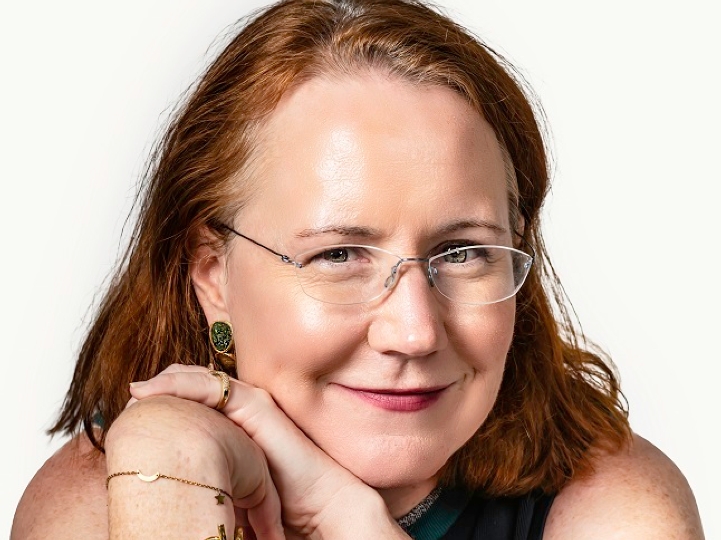Critical Conversations #21: What Is Higher Ed's Role in Protecting Free Speech?
September 2, 2020
JCC Connexions, Vol. 6, No. 3, August 2020
In "Free Speech in the Academy: Living our Values During Challenging Times" (Journal College & Character, vol. 21, no. 3, August 2020), this quarter's JCC Focus Author Eleanor J.B. Daugherty from the University of Connecticut, explores the role of campuses and universities in protecting free speech while providing for the needs of students adversely impacted by  speaker content. She recently responded to questions posed by Jon Dalton, JCC co-editor.
speaker content. She recently responded to questions posed by Jon Dalton, JCC co-editor.
1. You use the phrase “comfortably uncomfortable” in describing the role of free speech in higher education. What do you mean by this? How is it the case that the role of higher education is to make students uncomfortable?
It’s important to remember that higher education is a constructed environment: We all applied to be here; we didn’t grow up together. That choice to seek out, apply, and attend college creates a wonderfully foreign environment. We each encounter difference, diversity, and exposure to new ideas that, if successful, must make us uncomfortable as we experience and immerse ourselves in the unfamiliar. That discomfort, however, occurs within an environment supported by faculty and staff that enables our students to be "comfortably uncomfortable."
This means as educators we are obligated to provide a place that welcomes and values each student but is also committed to a provoking and challenging learning environment.That environment is created in the classroom and beyond–it saturates the entirety of the student experience. It provides all of us with the ability to be comfortable accepting the discomfort that accompanies the dynamic community of ideas, identities, and scholars that compose our colleges and universities.
2. Can you clarify the difference you see in “hurtful” and “hateful” speech and why such a distinction is important in higher education?
This is so important. “Hate speech” speaks to a legal standard that must be met for universities and law enforcement to hold students accountable to for acts of overt racism that constitutes a true threat of harm to an individual. It is a limiting definition that fails to capture all the harm that is caused to college and university communities when acts of bias and discrimination occur.
Hurt speech is what plagues our campuses and feels the most unresolved to me. These moments of hurt speech, which do not meet the legal standard provided in state and federal laws, present a challenge our universities must perpetually manage as they seek to protect free speech while also protecting the diverse identities of our students.
3. What role do you think student affairs staff should play in formulating and administering the Campus Event Procedures?
I believe a critical part of our success at UConn was providing Student Affairs leadership with the ability to both lead the creation of these procedures and how they are used by the University. Student Affairs understands student development, leadership development, crisis response and how to effectively coordinate teams. However, that success came from partnership and collaboration with colleagues across the university. I like to think of this as "cross functional leadership," meaning, you cannot rely on organizational charts to solve complex problems. You cannot employ a "not it" approach or suggest that one division within the university has the capacity to resolve these challenges alone.
4. What are some of the “restorative practices” that can be used to ameliorate the most negative effects of hurtful and hateful speech?
Restorative models enable the university to empower those feeling marginalized while facilitating recovery and accountability when harm to the community has occurred. This is, I believe, a critical tool to provide student affairs colleagues, particularly those in conduct, student activities, and residential life.
5. You argue that there is a tension between hate speech and free speech. Can you describe the nature and role of this tension for teaching and learning?
Students deserve and expect to be respected and cherished by the university. Of similar value is that free speech is essential for higher education to thrive as a place of discovery and research. Student affairs administrators and university leaders must embrace and reconcile this tension if we are to protect freedom of speech and the diversity of identities that are essential to creating an enriched, dynamic learning environment. This means that we must collectively create a learning environment that embraces what Ladson-Billings terms “culturally relevant pedagogy” [https://nationalequityproject.files.wordpress.com/2012/03/ladson-billings_1995.pdf] while providing space for students to stumble as they are exposed to new ideas and new ways of thinking. How faculty and student affairs administrators accept and embrace imperfection throughout that learning experience provides a true forum for growth that reduces shame and invites increased awareness and engagement.
...